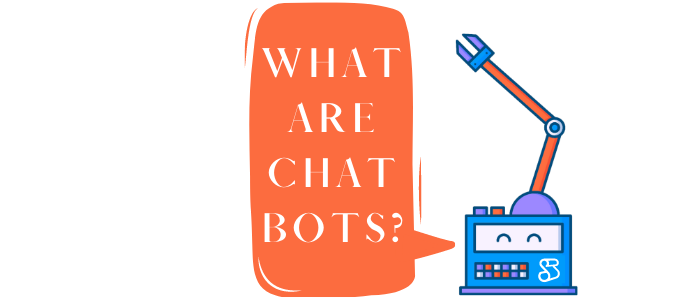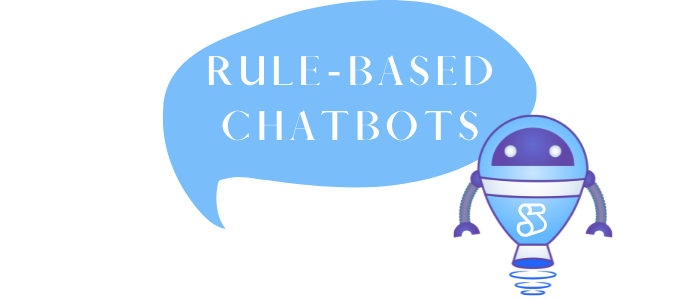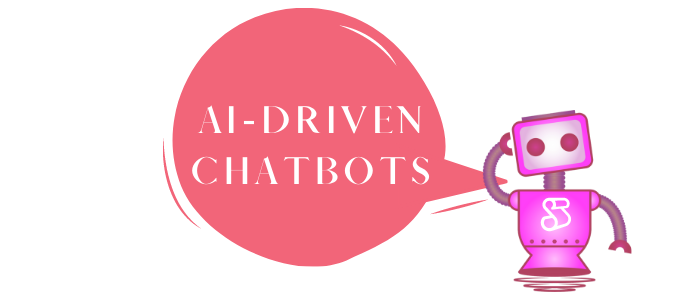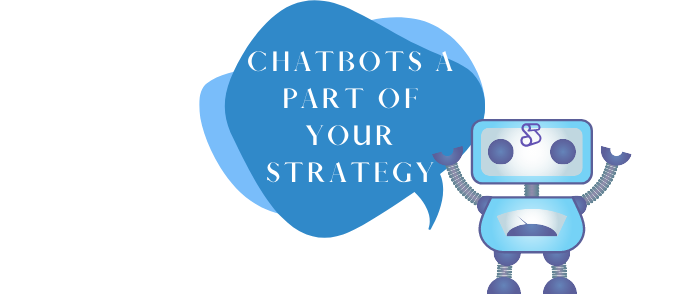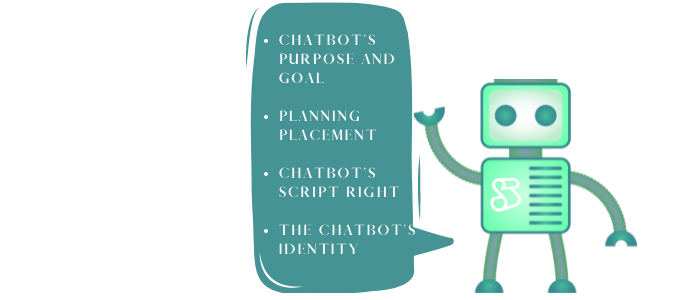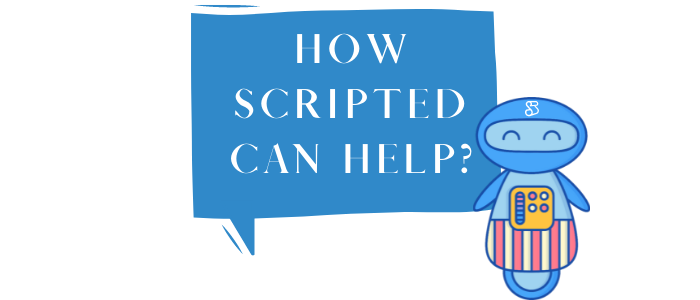- Blog Home
- Content
- Ciara Antolini
- Beginner's Guide To Chatbots
Beginner's Guide to Chatbots
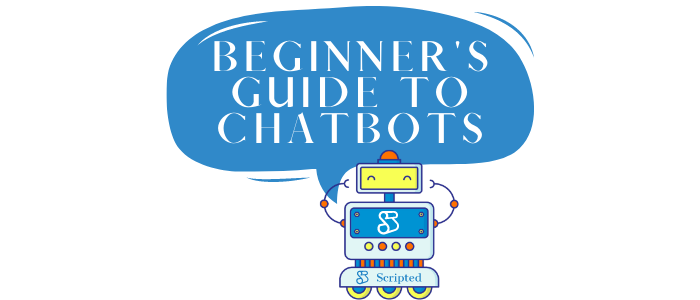
Anyone who spends time online has probably encountered a chatbot – a friendly bit of software that acts as an intermediary between website visitors and the team behind the brand. Until relatively recently, chatbots were only used in limited ways – but now, they're helping customers get the answers they need, turning website visitors into buyers, and making businesses more efficient.
Chatbots ranging from simple rule-based bots to sophisticated AI applications that understand the complexities of human speech can be configured to work with major social media platforms or strategically placed on company websites – and it's easy to design your own chatbots even if you're not a skilled coder. Here's an introduction to chatbots for beginners.
What Are Chatbots?
Chatbots come in several forms, but all of them are designed to handle interactions with users on a website's front end and to connect those users with company representatives at the right time. Chatbots are designed to create an outstanding customer experience for website visitors – and at the same time, save money and generate new revenue. A simple bot might nudge users toward providing their email addresses. More sophisticated programs like Amazon's Alexa and Google's Siri can accomplish much more. Regardless, they focus on improving customer services and experiences.
Chatbots are designed in programming languages like Python or created using any number of online chatbot platforms that can be customized and generated as a widget for embedding on a website, placed in newsletters and emails, or included in other company-related materials. In that way, chatbots are a back-end product with front-end functionality since they create a pathway for visitors to engage with a company and become customers or clients.
Chatbots can range from very simple to highly complex. Common types include:
Rule-Based Chatbots
Rule-based chatbots are relatively rigid in structure. They're programmed to execute a series of actions based on playbooks designed by an IT team or developer. Also, many of the non-techie online chatbot generators allow users with no design or development skills to produce simple rule-based chatbots with templates that can be customized for specific needs.
Rule-based chatbots typically follow a decision tree that determines what action a chatbot should take if certain parameters are met, such as clicking "yes" or "no" or recognizing a keyword or phrase. They're useful for automating many simple actions on a website or for encouraging e-commerce shoppers to complete transactions or continue shopping.
AI-Driven Chatbots
Chatbots like Amazon Alexa and Google Siri are at the highest tier of chatbot technology. Bots like these are powered by artificial intelligence and trained with machine learning to recognize and respond to natural language, and to use context and other cues to generate a wide range of context-appropriate responses.
AI chatbots learn over time to recognize natural human language and choose the right responses to inputs. During training, they're constantly monitored to ensure that they respond correctly and that they can extrapolate from current data to handle novel situations. Examples of this include the well-known abilities of these apps to place online orders automatically or to make recommendations based on a user's past choices.
AI-driven chatbots can be expensive to develop and time-consuming to train, so they aren't generally the right choice for situations where a simpler piece of software would do, such as directing website visitors to help articles and FAQs, answering scripted questions, or connecting visitors with human customer service representatives.
Live Chatbots
Live chatbots typically pop up when a visitor first lands on a webpage or landing page. They're usually friendly, easily accessible, and often they have silly names. These simple chatbots can encourage visitors to make immediate choices such as signing up for an offer, locating information on the site, or making a customer service request. These little chatbots are localized, inexpensive, and highly customizable. They can be placed anywhere on a website via widgets or snippets of code.
Marketers like live and rule-based chatbots because they offer immediate ways to build connections with visitors and ways to nudge visitors to take immediate actions they otherwise might not, such as signing up for an email newsletter, downloading a report, or accepting a free trial offer. That moves them one step closer to becoming committed customers and clients.
The Benefits (and Challenges) of Using Chatbots
Chatbot technology has been widely embraced not only by the commercial world but also by consumers, who like the convenience of accessing the help they need from anywhere at any time. But chatbot technologies can also create roadblocks to quality customer experiences and cost businesses money and customer loyalty.
For businesses, chatbots have numerous benefits for both brand visibility and the bottom line, including:
- Helping to convert web traffic into customers.
- Saving time and money.
- Creating a better user experience.
But chatbots can also have some downsides. In a recent survey on consumer attitudes toward chatbots, 15 percent of respondents said they'd never use a chatbot under any circumstance. Respondents listed a variety of reasons to avoid chatbots–and in some cases, even the companies that use them.
When chatbots are poorly designed or used improperly, they can cause considerable customer dissatisfaction. Chatbots with poorly written scripts can frustrate visitors. And when chatbots don't provide the help visitors are looking for, they can cause them to abandon the site altogether. Some visitors simply don't like chatbots, so they leave.
For businesses, a poorly performing chatbot can mean that more, not less, human intervention is needed to answer questions and give customers the help they're looking for. A bad chatbot experience on a company website can also affect visitors' opinions of the business as a whole.
How To Make Chatbots a Part of Your Strategy
For highly sophisticated, AI-driven chatbots and those that are capable of handling complex requests, many businesses turn to web developers who build bots from scratch with programming languages like Python. These chatbots are then added into a website's scripting on the back end and appear on the front-end, or client-facing side, with the graphical interface that users recognize.
Now, though, new chatbot creation platforms are making it easy for anyone to build a simple rule-based chatbot with a visual interface that requires no coding or development skills at all. Users can customize a basic chatbot template with their own scripts, calls to action, and other features.
It's even possible to give your chatbot its own name and avatar. The completed chatbot can be tested right on the design platform and modified as needed. When it's ready, it can easily be inserted into any webpage or landing page as a widget or code snippet. Chatbot creation platforms have multiple plan options, often starting at free for a limited number of designs.
But before you give developers or chatbot platforms a try, it's important to plan your chatbot design. Important considerations include:
Clarifying the chatbot's purpose and goal. What should the chatbot do when it's live on the site? Purposes could include helping visitors find answers, routing them to customer service, and encouraging them to subscribe. Goals might include converting visitors to customers, giving existing customers a convenient way to access the site, or building an email list.
Planning placement on the site. Location and accessibility are a key part of making sure a chatbot contribute to a user's positive experience, so determining the right location and behavior of your chatbot, or bots, is an important part of planning too. Some chatbots pop up immediately on the homepage or appear next to important content such as a form or downloadable report. Under other circumstances, a chatbot might open only when a "help" button is clicked.
Getting the chatbot's script right. Whether you're using a developer or a chatbot creation platform, it's essential to plan what your chatbot should say and how it will respond to visitor input. That might include feeding the bot a list of commonly asked questions, keywords, or phrases that the chatbot should recognize and respond to. Add links to any resources or pages you want the bot to recommend. Keep the script short so that visitors who want to connect with live representatives right away don't get frustrated.
Building the chatbot's identity. Whether you're aiming for a cheerful, funny chatbot or a more professional-sounding one, it's important to make sure your chatbot is accessible and represents your brand. Since it may not be immediately clear to visitors that they're interacting with a chatbot, designers recommend giving your chatbot a name and having it introduce itself as a chatbot at first contact with a visitor. Make sure that everything you want your chatbot to say is consistent with the persona you've established for it.
How Scripted Can Help
Creating the right chatbot copy is essential for building the kind of chatbot that meets your company's needs and gives users the quality experience they want. Scripted's pool of skilled and experienced freelance writers can help. With Scripted's comprehensive content solutions for businesses of all kinds, you'll be able to choose from a select group of carefully vetted content specialists who can create the quality chatbot copy that converts visitors into customers and keeps them coming back. Contact us today to learn how Scripted's content solutions can boost your brand and build your business.
Published by Ciara Antolini on Friday, December 17, 2021 in Content, Brand Identity, Chatbot, Website.
